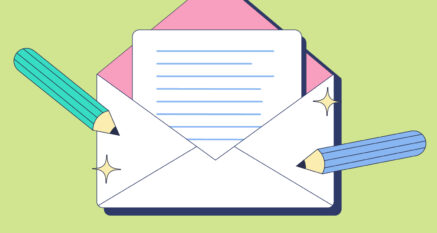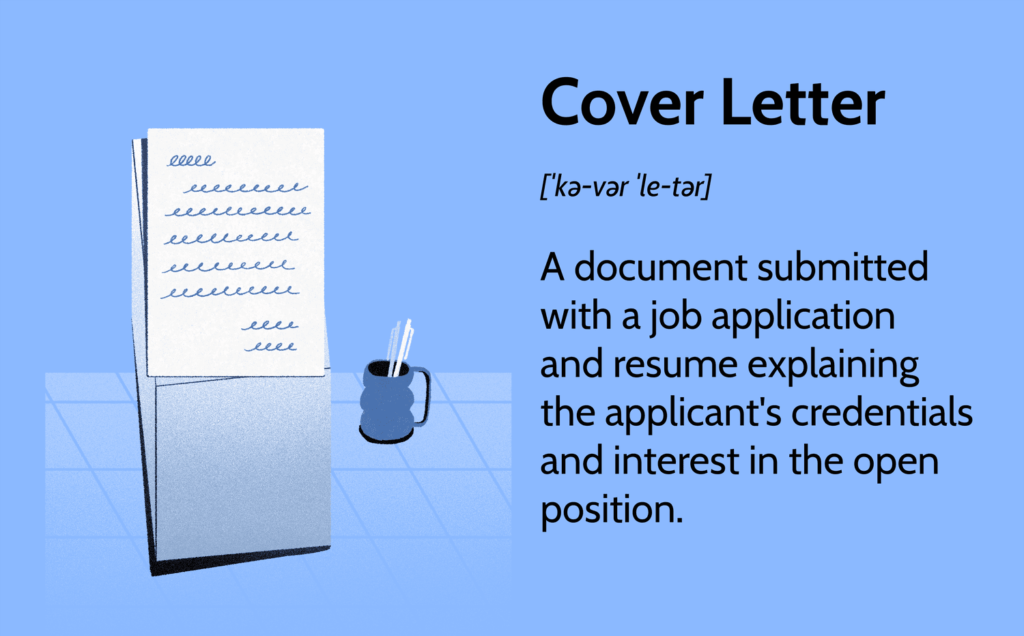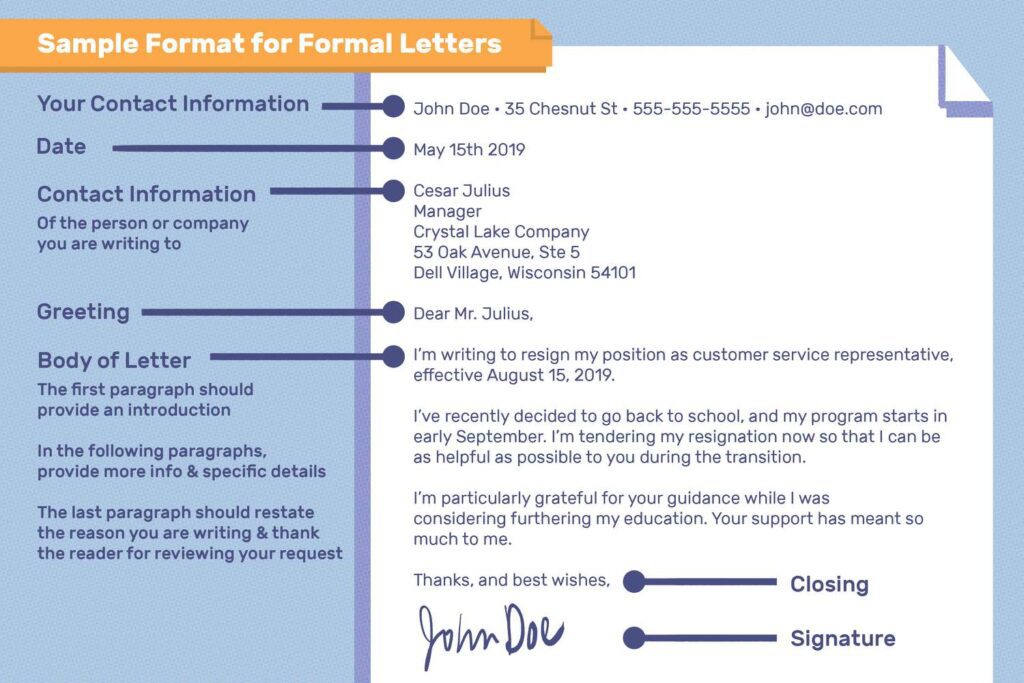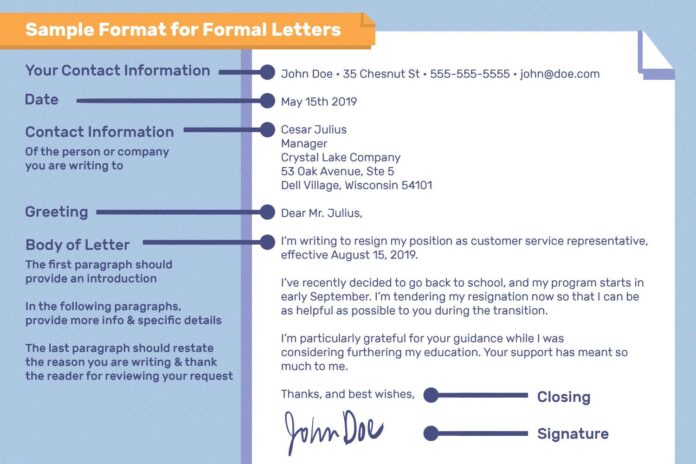To write a formal letter, follow a structured format and maintain a professional tone. There are various types, each serving different purposes.
Formal letters are crucial for professional and official communication. They help convey messages clearly and respectfully. Common types include business letters, cover letters, and letters of recommendation. Each type has a specific format, but all share essential components like the sender’s address, date, recipient’s address, salutation, body, closing, and signature.
Understanding the proper format ensures the letter is taken seriously. Clear, concise language is vital. Avoiding jargon and using respectful language enhances the letter’s effectiveness. Proper formatting and attention to detail reflect professionalism and can significantly impact the recipient’s response.
The Importance Of Formal Letters In Professional Communication
Formal letters are crucial in professional communication. They convey messages with clarity and respect. Understanding their importance helps improve business and academic interactions.
The Role In Business And Academia
Formal letters play a significant role in business and academia. They maintain professionalism and ensure clear communication.
In business:
- Formal letters are used for job applications, resignation letters, and business proposals.
- They help in contract negotiations and official notifications.
In academia:
- Formal letters are used for admission inquiries and scholarship applications.
- They assist in recommendation requests and academic collaborations.
Contrasting Formal And Informal Correspondence
Formal correspondence differs significantly from informal correspondence. Understanding these differences ensures proper communication.
| Aspect | Formal Correspondence | Informal Correspondence |
|---|---|---|
| Language | Professional and polite | Casual and friendly |
| Structure | Follows a specific format | Flexible and relaxed |
| Purpose | Official matters | Personal communication |
Formal letters use a professional tone. Informal letters are more relaxed.
Formal letters have a specific structure. Informal letters do not follow a strict format.
Formal letters address official matters. Informal letters cater to personal communication.
Understanding these aspects helps you write effective formal letters.
Understanding The Format Of A Formal Letter
Writing a formal letter requires a specific format to convey professionalism. Following a structured format ensures your letter is clear and effective. This section will guide you through the essential elements of a formal letter format.
General Structure Overview
The structure of a formal letter includes several key components. These components must be arranged in a specific order. Here is a simple breakdown:
- Sender’s Address: Include your address at the top.
- Date: Write the date below your address.
- Recipient’s Address: Add the recipient’s address next.
- Salutation: Start with a formal greeting such as “Dear Mr./Ms.” followed by the recipient’s last name.
- Body: Divide the body into three parts: introduction, main content, and conclusion.
- Closing: Use a formal closing like “Sincerely” or “Regards.”
- Signature: Sign your name and print it below.
Paper And Font Considerations
Choosing the right paper and font is crucial for a formal letter. Here are some guidelines:
| Aspect | Recommendation |
|---|---|
| Paper Type | Use high-quality, white paper. |
| Paper Size | A4 or 8.5″x11″ are standard sizes. |
| Font Style | Choose simple fonts like Arial, Times New Roman, or Calibri. |
| Font Size | Use 12-point size for readability. |
Maintaining a clean and professional appearance is key. Avoid using colored paper or fancy fonts. Stick to traditional styles to ensure readability and professionalism.
Essential Elements Of A Formal Letter
Writing a formal letter requires attention to detail. Each part of the letter has a specific purpose and format. Understanding these elements ensures your letter is professional and effective.
Sender’s And Recipient’s Information
Include the sender’s address at the top of the letter. This helps the recipient know where to send a reply. Next, add the recipient’s address. This ensures the letter reaches the correct person.
| Element | Details |
|---|---|
| Sender’s Address | Your full address, including street, city, and ZIP code. |
| Recipient’s Address | The recipient’s full address, including their name, company, and street address. |
Date And Subject Line
The date should be included below the sender’s address. Use the full date, such as “April 20, 2023”. The subject line follows, summarizing the letter’s purpose in one line. This helps the recipient understand the letter’s intent quickly.
- Date: Write the full date in the format of “Month Day, Year”.
- Subject Line: A brief line summarizing the letter’s main point.
Salutation And Complimentary Close
The salutation is your greeting to the recipient. Use “Dear” followed by the recipient’s title and last name, such as “Dear Mr. Smith”. The complimentary close is your sign-off. Common phrases include “Sincerely” or “Best regards”. This adds a polite ending to your letter.
- Salutation: Use “Dear” and the recipient’s title and last name.
- Complimentary Close: Use polite phrases like “Sincerely” or “Best regards”.

Crafting A Compelling Introduction
Writing a formal letter requires a strong introduction. This first part sets the stage for your message. A compelling introduction grabs the reader’s attention. It also lays the foundation for the rest of your letter.
Setting The Tone
The tone of your letter should be clear from the start. Use polite and professional language. A formal tone shows respect and seriousness. Avoid slang or casual phrases. Ensure your introduction matches the letter’s purpose.
Consider the following ways to set the right tone:
- Use formal greetings like “Dear Sir/Madam”.
- Keep sentences short and to the point.
- Show respect to the recipient.
Establishing The Purpose
The introduction should state the letter’s purpose. Be clear and concise. This helps the reader understand why you are writing. Mention any relevant context briefly. This sets up the main body of the letter.
Here are some tips to establish the purpose:
- Start with a clear statement of intent.
- Include any necessary background information.
- Highlight the main points you will cover.
For example, if you are writing a job application, your introduction might look like this:
I am writing to apply for the Marketing Manager position at XYZ Company. With over 5 years of experience in the field, I am confident in my ability to contribute to your team.
This introduction sets the tone and establishes the purpose effectively.
Developing The Body Of The Letter
The body of a formal letter is the heart of your message. It’s where you present your main points and details. Crafting this section carefully ensures your message is clear and effective.
Organizing Content Logically
Start by outlining your main points. This helps you stay on track. A logical flow makes your letter easy to read and understand.
- Introduction: Briefly state the purpose of your letter.
- Main Points: Present each point in a new paragraph.
- Conclusion: Summarize your points and state any actions needed.
Use short paragraphs to keep the reader engaged. Each paragraph should focus on one idea. This makes your letter more organized.
Maintaining Formality And Clarity
Use a formal tone throughout your letter. Avoid slang or casual language. This keeps your letter professional.
Be clear and concise. Use simple words and short sentences. This ensures your message is easy to understand.
Proofread your letter to avoid errors. Mistakes can make your letter look unprofessional. Double-check your grammar and spelling.
Here is a simple example:
| Before | After |
|---|---|
| Hey, I need a favor from you. | Dear Sir/Madam, I am writing to request a favor. |
| Can you help me with this thing? | Could you please assist me with this matter? |
Using polite and formal language shows respect. It also makes your letter more effective.
Concluding With Purpose
The conclusion of your formal letter is crucial. It is the final opportunity to leave a lasting impression. A well-crafted ending ensures your message is clear and your purpose is achieved.
Summarizing Key Points
Summarize the main points of your letter in the conclusion. This helps the reader understand the key messages. Use simple sentences to restate the important details. For example:
- Restate your request or main idea.
- Highlight any deadlines or important dates.
- Remind the reader of your contact information if necessary.
Keeping the summary concise ensures the reader grasps your message quickly.
Call To Action And Sign-off
The call to action is a vital part of your letter’s conclusion. It tells the reader what you want them to do next. Examples of calls to action include:
- “Please respond by [date].”
- “Contact me at your earliest convenience.”
- “I look forward to your prompt reply.”
After the call to action, include a polite sign-off. Common sign-offs are:
- “Sincerely,”
- “Best regards,”
- “Yours faithfully,”
Sign your name below the sign-off for a personal touch.
Polishing With Proper Etiquette
Writing a formal letter requires attention to detail and proper etiquette. Polishing your letter ensures it looks professional and respectful. Following key etiquette rules can make a big difference. Let’s delve into the essentials of proofreading and adhering to formalities.
Proofreading For Errors
Proofreading is crucial for a polished letter. Errors can undermine your message. Always check for:
- Spelling mistakes
- Grammar issues
- Punctuation errors
Read your letter aloud to catch mistakes. Use tools like spell check but don’t rely solely on them. Ask a friend to review your letter for a fresh perspective.
Adhering To Formalities
Adhering to formalities shows respect and professionalism. Key formal elements include:
| Element | Details |
|---|---|
| Salutation | Use “Dear” followed by the recipient’s title and last name |
| Closing | Common options include “Sincerely,” or “Yours faithfully,” |
| Signature | Sign your name above your typed name |
Use proper titles like Mr., Mrs., Dr., etc. Address the recipient correctly to maintain respect. Include your contact information to ensure they can reply.
Incorporating these tips enhances your formal letter. Always proofread and follow formalities for a professional touch.


Final Touches And Sending Your Letter
Once you’ve written your formal letter, the next step is to ensure it reaches its destination in perfect condition. The final touches and sending your letter are crucial for maintaining a professional appearance. This section will guide you through the steps needed to finish and send your formal letter effectively.
Envelope Formatting
Properly formatting your envelope is vital. A well-formatted envelope ensures your letter reaches the correct recipient without delay.
- Recipient’s Address: Place the recipient’s address in the center of the envelope.
- Your Address: Your return address should be in the top left corner.
- Postage Stamp: Place the postage stamp in the top right corner.
Understanding Postage And Delivery
Choosing the right postage and delivery method is essential. Different options are available depending on your needs.
| Method | Delivery Time | Cost |
|---|---|---|
| Standard Mail | 3-5 days | Low |
| Express Mail | 1-2 days | Medium |
| Overnight Shipping | 1 day | High |
Choose a method based on your urgency and budget. Double-check all details before sending to ensure accuracy.


Frequently Asked Questions
What Is The Format For Writing A Formal Letter?
A formal letter format includes the sender’s address, date, recipient’s address, salutation, body, closing, and signature. Use a professional tone.
What Are The Tips In Writing A Formal Letter?
Use a clear and professional tone. Address the recipient properly. Keep sentences short and concise. Use proper grammar and punctuation. End with a courteous closing.
What Is Formal Letter Definition And Types?
A formal letter is a written communication following a specific format. Types include business letters, cover letters, and complaint letters.
How To Write A Letter Properly?
To write a letter properly, start with a clear header including your address and date. Use a polite salutation. Write concise, focused body paragraphs. End with a courteous closing and your signature. Proofread for errors.
Conclusion
Mastering the art of writing a formal letter is essential for effective communication. By following the correct format and guidelines, you can convey your message clearly. Practice and attention to detail will enhance your letter-writing skills. Utilize these tips to create professional and impactful letters every time.






